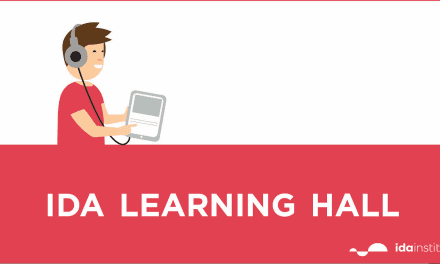By Christa Nuber
On Thursday, September 10, 2015, the Institute of Medicine’s (IOM) Committee on Accessible and Affordable Hearing Health Care for Adults held its third in a series of three open meetings at the Keck Center of the National Academies in Washington, DC. This third meeting was comprised of three different panel discussions each focusing on a particular area of hearing care, followed by a Q&A period reserved for Committee members.
In the IOM Committee’s first meeting in April 2015, panelists provided background on the importance of hearing to individual and societal health, including issues such as isolation, social connectivity, and economic productivity. The second meeting covered diverse panel topics that ran the gamut from hearing screenings in minority populations to future emerging technologies.
The third meeting provided interesting perspectives on hearing aid affordability and accessibility in Europe and beyond, and also accessibility and affordability for young adults who are transitioning out of their parents’ health insurance plans. As with the first two meetings held by the IOM Committee, the third meeting’s panel discussions raised compelling and sometimes controversial issues, and elicited a lively response from Committee members during the Q&A periods.
Panel 1: International Perspectives on Hearing Healthcare
The Thursday, September 10 meeting, which was chaired by Dan G. Blazer, MD, PhD, MPH, opened with Panel 1: International Perspective, moderated by Frank Lin, MD, PhD.
First Panel 1 speaker Adrian Davis, PhD, former national director of the newborn hearing screening program in the UK, highlighted the fact that with advances in medical care there has been a decline in cardiovascular disease and people are now living longer lives. He asked how people might benefit more from these added years of life, especially with the issue of age-related hearing loss and communication issues. Dr Davis discussed how improving access and affordability of hearing care in the UK will require an overhaul of career pathways for hearing care professionals, as well as an improved structure of accreditation and quality assurance for providers. He said there will need to be an emphasis on networking and peer review, and that we need to explore how professionals in different countries around the world can learn from each other. Dr Davis proposed that the hearing industry build a communication network for sharing innovation and vision internationally, working in partnership rather than in competition.
The second speaker, Curtis Alcock, a private-practice hearing aid dispenser from Exeter, England, who has written and lectured extensively about the need to change our language, imagery, and marketing in hearing healthcare, discussed three main issues: 1) Affordability of hearing aids; 2) Accessibility to hearing aids, and 3) The perception of hearing loss and how it ties into self-assessment of hearing loss (perceived hearing loss vs actual hearing loss). Alcock said that, while the NHS system of hearing care is one way to solve the problem of affordability (which appears to increase the uptake of hearing technology), there is still a large unmet need in the UK (and worldwide) because a government-funded system doesn’t always address the underlying problem, which is that 1) people often find it difficult to recognize when their own hearing range is reduced and, 2) if there is a change in hearing that they notice, there are sometimes reasons for it which need further medical investigation, and 3) professionally qualified and regulated (and equipped) hearing health care professionals are best placed to recognize this–rather than a member of the public, or a general doctor who doesn’t always have specific training to recognize hearing-related conditions. Alcock also pointed out that in the UK, NHS-funded hearing aid provision and self-funded hearing aid provision are seen as totally separate systems, even though they overlap in many ways. The NHS has economies of scale, which cannot be matched by self-funders who therefore pay significantly more, yet there are reasons why people still choose to self-fund. Alcock proposed that a way to improve the hearing care system in the UK would be to unify the two systems, so that patients can access economies of scale but aren’t penalized for choice.
Mark Laureyns, MS, the third speaker in this panel, from the European Association of Hearing Aid Professionals presented statistics from a 2011 EuroTrak study on the access and affordability of hearing aids in Europe. The study presented the same questions to age 65+ consumers in various European countries in an effort to track how likely people are to seek care for self-perceived hearing loss as compared to how likely they are to seek hearing care when it has been advised by a doctor. Laureyns reported that people were 26% likely to seek hearing care when hearing loss was self perceived, and 36% likely to seek hearing care when advised to do so by a doctor. Further, the study showed that, when a state-supported system provides hearing aids, people are 44% likely to procure them. People were found less likely to get hearing aids in countries that have a fixed reimbursement system. Laureyns highlighted an interesting finding of the study: people in state-supported systems who received government-provided hearing aids reported less satisfaction with their hearing aids and used their hearing aids less often than did people who had paid for their hearing aids out of pocket, and had chosen their own hearing devices. Laureyns’ presentation suggested that freedom of choice correlates to greater satisfaction or perceived improvement with hearing aids.
Panel 2: Young Adult Perspectives
For this third meeting, the IOM Committee invited two successful young adults with hearing loss to share their personal experiences and views for Panel 2: Young Adult Perspective, moderated by Kate Seelman, PhD. This panel, along with the Q&A discussion that followed it, proved to be the most emotionally compelling of the three panels, because it painted a picture of the difficult journey kids with hearing loss travel as they transition from getting health coverage, access and advocacy through their parents during childhood, but then must transition to self-care and self-advocacy in young adulthood as they enter college. This discussion made it clear that many young adults with hearing loss do not take advantage of the Americans with Disabilities Act or other resources that might help them along their journey.
Zina Jawadi, a Stanford University student, described going through life with hearing loss as being “like a deaf person at a wedding” who misses much of what is going on. Jawadi, whose parents were able to get her appropriate hearing care and hearing aids as she was growing up, reported that only 5% of young adults with hearing loss who need hearing aids use them, and she cited cost as the primary reason for this. In characterizing the issue as a socioeconomic one, Jawadi referred to statistics from a June 2015 article in The Hearing Review, which estimates that a pair of basic hearing aids costs $4,800, and more sophisticated hearing aids can cost $6,000 per pair. She said that many people delay procurement of amplification due to a lack of health insurance, but even if they had it, they would still encounter obstacles to getting hearing aids. Many health insurance plans don’t cover the cost of hearing aids, or allow only $1,000 in hearing aid coverage every 2-5 years. Even Medicaid, Jawadi said, only covers up to $1,500 per year for hearing aids.
Zawadi explained that most young adults at universities are from middle-class families that have already sacrificed much to fund the student’s education, and paying for hearing aids out of pocket is often beyond their means. This predicament further reinforces socioeconomic differences in an academic setting, and many young Americans with hearing loss are missing daily activities. Further, most university faculty don’t realize that, because students with untreated hearing loss are missing much of what is said during lectures, the students’ hearing loss is affecting their grades.
Patrick Holkins, a Harvard graduate and trial attorney with the US Department of Justice, was the second speaker on the young adult panel and, like Jawadi, he has had hearing loss since childhood. However, Holkins said he had chosen not to get hearing aids until his early 20s when he became involved in the Hearing Loss Association of America (HLAA) and received more support for his hearing loss. He eventually formed the first HLAA chapter for youth. Holkins echoed Zawadi’s belief that the many young Americans with hearing loss are missing out on appropriate hearing care (via hearing aids) for socioeconomic reasons. He reported that in other countries, like South Africa, the government provides children with free hearing aids every 5 years. He argued that the United States’ lack of provision of free hearing aids to children is a “shortfall of will and imagination.”
Holkins provided an insightful portrait of his generation, the “Millennials,” which are the cohort of Americans born between 1980 and the mid-2000s, and the largest generation in the US. According to Holkins, this group believes that access “is not a privilege, but a birthright.” He explained that Millennials are media savvy and brand conscious, and won’t see a healthcare provider without consulting social media first. Millennials will seek resources and use high technology alternatives (ie, PSAPs) for hearing loss, Holkins believes. This group is uniquely equipped to deal with today’s world, but that doesn’t mean they don’t need better access to assistive technology and good hearing aids—and he says there is no reason why hearing aids should cost $1,800. Holkins outlined three steps for improving access in the US: 1) Improve access to loop systems by looping every meeting facility in the US; 2) Make closed-captioning available for free nationwide, and 3) Raise awareness to change the perception of hearing loss and make it part of the national conversation.
Holkins concluded his presentation by urging the meeting audience to pass the Hearing Aid Tax Credit. “It is a far cry from the universal coverage we deserve, but would be a huge step.”
Panel 3: Improving Accessibility and Affordability
Panel 3, Improving Accessibility and Affordability, was moderated by Darrell Gaskin, PhD. The first presenter was Ateev Mehrotra, MD, of Harvard Medical School, who opened with the question: “How do we see industries change?” He then launched into a discussion that focused on “disruptive innovation,” wherein he identified retail clinics (“minute clinics”), telemedicine outlets (ie, eVisits.com), and online symptom checkers (designed to use a triage approach to helping end-users determine if a doctor visit is necessary) as the three “disruptive innovators” in the healthcare industry—and may have future implications for the hearing care industry. Dr Mehrotra outlined the pluses and minuses of these three disruptive innovators in healthcare. One plus Dr Mehrotra highlighted was that the new innovations can help cut down on the 100 million emergency doctor visits per year in the United States, many of which are unnecessary. Another plus is the affordability and quality of these healthcare innovators, with the quality often being comparable to the standard of care provided by hospital emergency rooms.
Dr Mehrotra was careful to point out that these disruptive innovators have been opposed by the medical community, citing concerns there may be a higher number of misdiagnoses, leading to safety issues and higher costs further down the road. A couple of minuses, according to Dr Mehrotra, are that broad-spectrum antibiotics are more likely to be prescribed by remote providers, and some tests are more difficult for tele-doctors to order or administer. However, although there appears to be significant variation across providers, retail clinics have been shown to provide superior care in some cases (ie, respiratory care) as compared to emergency rooms, according to Mehrotra.
David Zapala, PhD, an audiologist with the Mayo Clinic in Jacksonville, Fla, and an IOM Committee Member, provided a presentation on the challenges of managing disease risk in the system as Baby Boomers age into retirement, effectively doubling the number of people in their 60s with age-related hearing loss. Zapala outlined how the FDA regulates hearing healthcare diagnostics and testing, pointing out that its preferred path—initial consultation with an otolaryngologist, followed by referral to an audiologist for secondary evaluation and testing—is costly and time-consuming. Zapala cited a Mayo Clinic study that showed that non-physician diagnostics, specifically an audiologist-only testing approach with no preliminary doctor evaluation, could lower costs and be equally as effective. He pointed out that the audiologists in the study didn’t miss a single disease-related problem.
Zapala named two new tools designed to help patient-consumers identify their own disease risk: 1) Professional Ear Disease Risk Analytics (PEDRA), a standardized non-disease risk assessment from non-physician providers, and 2) Consumer Ear Disease Risk Management (CEDRA), which informs consumers of risk factors and the need for further evaluation by a doctor. Both are designed to optimize the identification of disease in a direct-to-consumer marketplace. A person contemplating the purchase of a hearing aid would have access to CEDRA.
Jani Johnson, AuD, PhD, from the University of Memphis, provided the findings from the Cox et al study on speech understanding among participants using basic vs premium hearing aids, which showed no statistically or clinically significant differences between the hearing aids on any measures of outcome for either new or experienced hearing aid users. The study also examined sound acceptability as related to hearing aid use and satisfaction, localization, and noise reduction. According to Dr Johnson, the only area where premium hearing aids appeared to make a difference was in sound localization, particularly for people with single-sided deafness. She said it is hoped that the findings, which showed that in cases of “uncomplicated hearing loss” a basic hearing aid will work just as effectively as a premium hearing aid, will help hearing care professionals recommend the most suitable device for a patient.
Gustav Chiarello, from the Federal Trade Commission’s (FTC) Office of Policy Planning, closed out the Panel 3 discussion with a presentation on how the FTC has re-evaluated its supervision of certain areas of healthcare where, with the advent of technology resources, high levels of knowledge and skill are no longer necessary. He used dentistry as a case example, where many non-dentists are now providing teeth whitening services in portable clinics or kiosks, and many public schools are offering basic check-ups by dental hygienists as “non-dentist care.” Chiarello explained that there has been a shift in the FTC’s approach, and outlined the steps that were taken by the FTC to determine how much supervision was needed to protect consumers’ welfare and protect them from fraud, and if a change in regulation provides consumers with a benefit they would not otherwise receive. Chiarello said the FTC is also concerned with policy issues around competition, and recounted how incumbent dentists in some states had tried to stop dental exams from being conducted in public schools.
In the Q&A period following the Panel 3 presentations, Frank Lin asked Chiarello how the FTC views discrepancies in restrictions surrounding hearing aids whereby the FDA currently regulates how hearing care is provided and how hearing aids are acquired (requiring a doctor consult and subsequent referral to an audiologist), yet consumers can bypass that path by going online to purchase a hearing aid. Chiarello compared this scenario to someone going to the grocery store to purchase an over-the-counter teeth whitening kit from a retail brand. He admitted that the problem is complicated due to the need for follow-up repairs and services, and proposed that we may be at the point where we need to re-evaluate barriers and access to care, and determine where non-physician providers can provide those services.
Many questions from Committee members following the final panel discussion were focused around return rates of hearing aids, PSAPs, the value of online tools, healthcare reform, the various disruptive innovators that have entered the hearing care market, the need for standard guidelines, and demographics. This Q&A period, as with the previous two, raised salient issues and gave presenters the opportunity to elaborate on study findings—confirmation that the Committee had succeeded in its goal to set up these meetings as fact-finding workshops.
Committee Chair Dr Blazer, emphasized that, while all comments at this meeting and the previous open meetings were welcomed as part of the larger discussion, they are not necessarily reflective of what will ultimately be recommended in the Committee’s final Consensus Report due in May 2016. For more information, see Hearing Review Editor Karl Strom’s August 2015 article “Speculation on the Institute of Medicine’s Second Meeting on Accessible and Affordable Hearing Health Care”.
The corresponding slides from the IOM Meeting presentations are available online at the IOM’s meeting website.
Corrections were made to paragraph five of this article on September 23, 2015, based on clarifications from presenter Curtis Alcock.
Christa Nuber is associate editor of The Hearing Review.







I’d love to see a simple, clear description of how the FDA’s regulations differentiate between hearing aids and PSAPs. Reading the text online requires quite a bit of reading BETWEEN the lines. Can somebody parse it for us?
Dear Christa,
Thank you for summarizing the discussions from third meeting.
I was wondering if you could provide more information on the CEDRA survey. Who is using this survey (in the wild), and where can we find a copy of the survey to assess?
Thank you,
Abram Bailey
Hi Abram,
For more details on the CEDRA survey conducted by Mayo Clinic in Florida, you might consult Dr. Zapala’s slides, which are now available to view on the IOM’s meeting site. Slides 15-20 cover the PEDRA and CEDRA surveys in greater detail. Here is a link to Dr. Zapala’s slides: http://iom.nationalacademies.org/~/media/Files/Activity%20Files/HealthServices/HearingHealthCare/Meeting%203/David%20Zapala.pdf
Slides from other presenters are now available on the IOM’s online meeting page as well:
http://iom.nationalacademies.org/Activities/HealthServices/HearingHealthCareForAdults/2015-SEP-10.aspx
Thanks for joining the conversation!
Christa